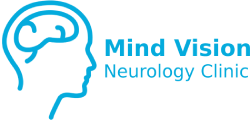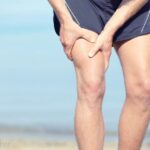
Muscular Disorders
The terms ’muscle disease’, ‘muscular dystrophy’, ‘neuromuscular conditions’ and ‘neuromuscular disorders’ all describe a large group of conditions which affect either the muscles, such as those in the arms and legs or heart and lungs, or the nerves which control the muscles. Muscle disease include a number of rare conditions, which in most cases tend to present at around the same age and due to their progressive character, they can lead to physical limitations and reduced life expectancy.
What are the Risks of Open-Heart Surgery?
- Injury or overuse, such as sprains or strains, cramps or tendinitis
- A genetic disorder, such as muscular dystrophy
- Some cancers
- Inflammation, such as myositis
- Diseases of nerves that affect Muscle
- Infectious Diseases
- Certain medicines
Symptoms
Symptoms vary with the different types of muscular dystrophy. All of the muscles may be affected. Or, only specific groups of muscles may be affected, such as those around the pelvis, shoulder, or face. Muscular dystrophy can affect adults, but the more severe forms tend to occur in early childhood.
Muscle dystrophies are commonly associated with:
- Intellectual disability (only present in some types of the condition)
- Muscle weakness that slowly gets worse
- Delayed development of muscle motor skills
- Difficulty using one or more muscle groups
- Drooling
- Eyelid drooping (ptosis)
- Frequent falls
- Loss of strength in a muscle or group of muscles as an adult
- Loss in muscle size
- Problems walking (delayed walking)
Types
Muscular dystrophy is a group of inherited diseases that are characterized by weakness and wasting away of muscle tissue, with or without the breakdown of nerve tissue. There are nine types of muscular dystrophy, with each type involving an eventual loss of strength, increasing disability, and possible deformity The most well known of the muscular dystrophies is Duchenne muscular dystrophy (DMD), presently no cure, it occurs genetically, most commonly in children by his/her mother and is the most severe of all the muscular dystrophies. The symptoms first present in 3 to 5 years of age, as progressively joints become stiff and muscles power is lost. Thus, DMD is characterized as a severe life-limiting disease requiring multi-disciplinary intervention and life-long management.
Diagnosis
Usually it is first suspected because of symptoms: a muscle weakness is noticed by the patient, family or a doctor. Also, if a child has delayed motor milestones (as mentioned above), a doctor may advise testing for MD, even though the problem could be due to another cause
- A blood test for creatine kinase (CK) – in many types of MD, the blood level of CK is very high.
- A muscle biopsy – this involves taking a small sample of muscle under local anesthetic. The sample is examined under the microscope and the muscle chemicals (proteins) may be tested.
- Genetic analysis – this involves testing a person’s DNA using a blood sample. It can detect many (not all) cases of MD.
- An electromyogram (EMG) – this is a recording of the electrical activity in a muscle.
- Muscle ultrasound is used to look for suspected DMD.
All Department
Book Appointment
Quick Contact
- Address E-12, Green Park Main (Near Central Bank) New Delhi-110016.
- Email info@drbhaskarshukla.com
- Phone +91-9968405964




